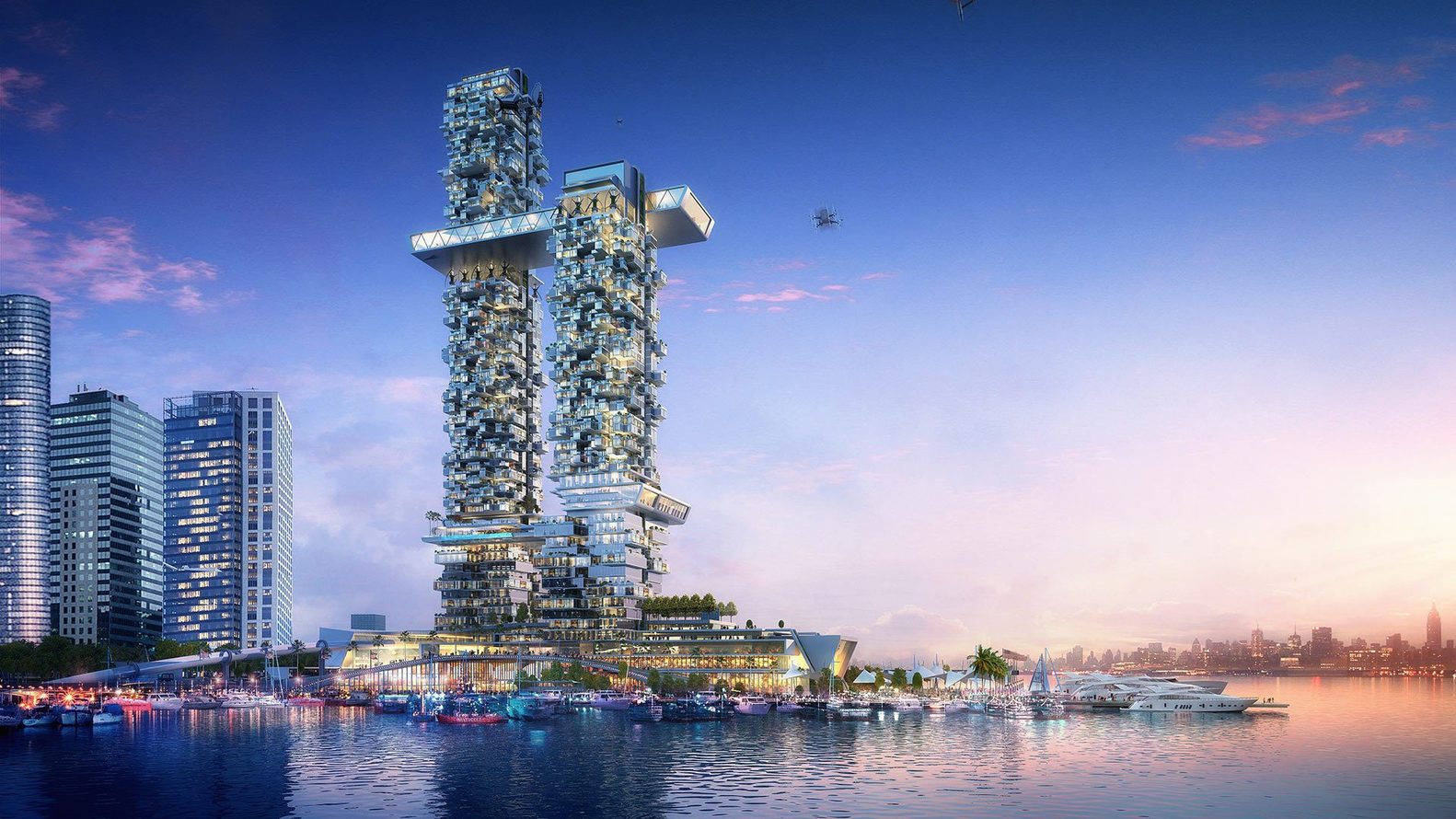
Humphreys and Partners, a Dallas-based architecture firm, presented a vision of future residential living at the 2018 International Builders’ Show earlier this year. Tackling current issues of affordable housing, sustainable design and how technology is changing the way we live, their futuristic vision Pier 2: Apartment of the Future consists of two soaring skyscrapers on the Manhattan waterfront.
The design fits into a vision of the future where autonomous vehicles, artificial intelligence, drones and automated homes are omnipresent and a part of our day-to-day lives. And perhaps this vision is not as limited to the realm of science-fiction as it may seem, with Elon Musk’s proposed Hyperloop recently receiving a permit from the D.C. transportation department to conduct preliminary excavation. The Hyperloop is a transportation system with an in-service goal of 2021, consisting of vacuum tunnels where capsules would speed through on a cushion of air. Humphreys and Partners’ design of the twin apartments incorporates the Hyperloop in their site plan, as well as considering other transportation-related technology, such as full-service bike stations, landing pads for drones and energy-generating walkways. The design also anticipates a fully-automated future for retail, with a cashier-less Amazon Go store on the ground level.
Pier 2: Apartment of the Future also tackles the current issue of affordable housing. It uses a modular design to create units of affordable micro-apartments that can be adapted for co-habitation with others. The design encourages co-living spaces that achieve a sense of community in an often alienating urban landscape. With the advent of the gig economy, where the tradition of having a lifetime career gives way to more and more entrepreneurial and contract-based work, the design incorporates co-working spaces at the lower levels.
In terms of sustainability, the apartments would use photovoltaic glass, which, according to the firm, will reduce electrical consumption by up to 34 percent. The design also uses wind turbines that are located under the upper platform that links the two towers to generate energy for the apartments, as well as solar panels, Tesla energy and using the nearby Hudson River for tidal power. On the sides of the towers, green walls are used for vertical farming and to filter the air.
Avots: Archdaily